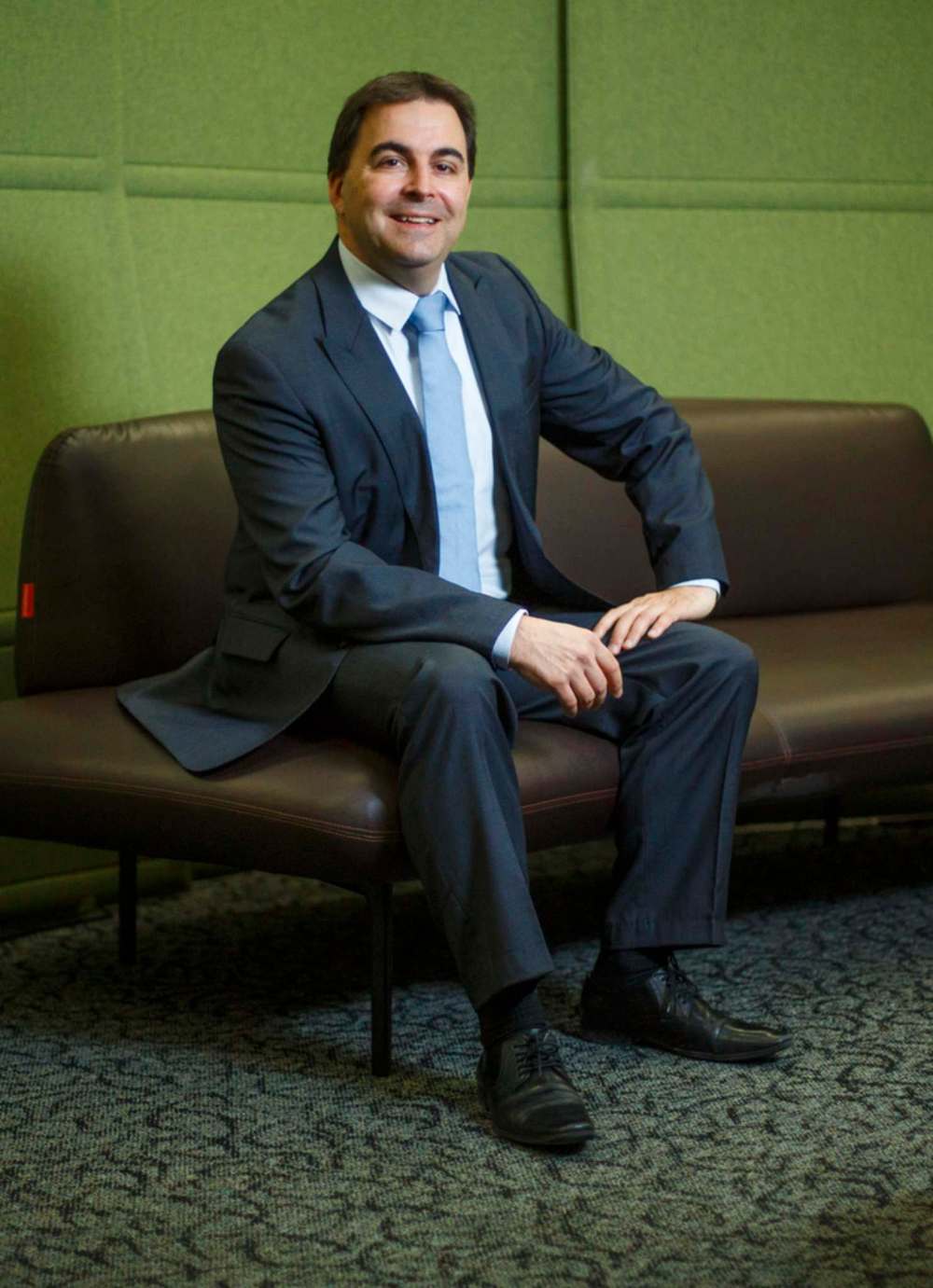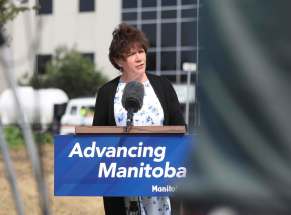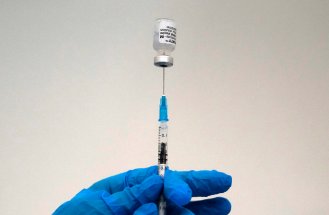Autopac revenue secretly diverted away from rebates, rate reduction Tories deny plan illegal
Read this article for free:
or
Already have an account? Log in here »
To continue reading, please subscribe:
Monthly Digital Subscription
$0 for the first 4 weeks*
- Enjoy unlimited reading on winnipegfreepress.com
- Read the E-Edition, our digital replica newspaper
- Access News Break, our award-winning app
- Play interactive puzzles
*No charge for 4 weeks then price increases to the regular rate of $19.00 plus GST every four weeks. Offer available to new and qualified returning subscribers only. Cancel any time.
Monthly Digital Subscription
$4.75/week*
- Enjoy unlimited reading on winnipegfreepress.com
- Read the E-Edition, our digital replica newspaper
- Access News Break, our award-winning app
- Play interactive puzzles
*Billed as $19 plus GST every four weeks. Cancel any time.
To continue reading, please subscribe:
Add Free Press access to your Brandon Sun subscription for only an additional
$1 for the first 4 weeks*
*Your next subscription payment will increase by $1.00 and you will be charged $16.99 plus GST for four weeks. After four weeks, your payment will increase to $23.99 plus GST every four weeks.
Read unlimited articles for free today:
or
Already have an account? Log in here »
Hey there, time traveller!
This article was published 07/10/2021 (1523 days ago), so information in it may no longer be current.
Manitoba’s Progressive Conservative government approved a covert plan to divert $113 million in excess Autopac revenue — which by law should have been used for a rate reduction or rebate — to avoid having to pay for rising costs at driver and vehicle licensing.
The plan to divert excess revenue, which has never been publicly disclosed, was devised by senior management at Manitoba Public Insurance in 2020 and approved by both the Tory-appointed board and Crown Services Minister Jeff Wharton earlier this year.

The plan involves taking $60 million from Autopac extension revenue last March, and another $53 million will be moved in March 2022.
Eric Herbelin, president and CEO, confirmed in an interview he saw an opportunity to use a portion of the excess Autopac revenue — the result of plummeting claims costs during the pandemic — to cover rising costs at driver and vehicle licensing.
Driver and vehicle licensing is a non-insurance service offered by MPI, but is paid for through general revenue. However, government support for it has fallen short of actual costs for many years, resulting in multimillion-dollar deficits. The licensing branch is facing about $50 million in costs associated with the implementation of a new information technology platform.
“… no matter what the colour of the ruling party, these decisions take time and we have bills to pay.”
– MPI president and CEO Eric Herbelin
Herbelin said the use of excess Autopac revenue was designed to be a “stop-gap” measure to address the annual shortfall at licensing and cover the cost of technology upgrades. The longer term strategy is to get the government to pay more of the costs, both now and into the future, he said.
“MPI has been in discussion with government for over a year,” Herbelin said. “(But) no matter what the colour of the ruling party, these decisions take time and we have bills to pay.”
However, MPI sources confirmed Herbelin was repeatedly told his plan would likely contravene parts of the MPI Act and the terms of the capital management plan (CMP), the rules governing the use of excess revenue negotiated and approved by the Public Utilities Board in 2019.

The CMP specifically requires any revenue over and above capital reserve targets from either the basic or extension lines of Autopac insurance must be used for rate reductions or rebates.
“(Herbelin) was very dismissive about everyone’s concerns,” said one source. “The instant he told everyone about the plan, he was told it was a very bad idea.”
Licensing funding crunch
Manitoba’s driver and vehicle licensing (DVL), which includes all of the physical and online services to support annual licensing applications and renewals, is at the heart of an improper use of Autopac revenue.
In 2004, the then-NDP government transferred DVL operations to Manitoba Public Insurance. The theory was that allowing people to obtain or renew a licence in the same location where they bought Autopac was good for ratepayers. It allowed the government to offload real estate and leases needed for a separate network of DVL locations.
Manitoba’s driver and vehicle licensing (DVL), which includes all of the physical and online services to support annual licensing applications and renewals, is at the heart of an improper use of Autopac revenue.
In 2004, the then-NDP government transferred DVL operations to Manitoba Public Insurance. The theory was that allowing people to obtain or renew a licence in the same location where they bought Autopac was good for ratepayers. It allowed the government to offload real estate and leases needed for a separate network of DVL locations.
However, MPI was restricted by legislation from doing anything other than manage its auto insurance business. So, the NDP government signed a formal contract with MPI to provide DVL services outside its normal mandate.
Under the terms of that deal, the government would still get all of the revenue from licensing and vehicle registration fees, but would provide an annual transfer to MPI to cover the operating costs of DVL. In 2004, that transfer was set at $30 million.
Neither the NDP nor Tories have increased support to DVL since that deal was signed, even though the number of vehicles and drivers increased, and the amount of money collected by the government rose.
In 2020-21, Manitobans paid $212 million in licence and vehicle registration fees, but MPI still only got $30 million in annual support.
In recent years, DVL has started to lose between $7 million to $8 million per year, a sum equal to a 0.75 per cent increase on the average Autopac policy. MPI has repeatedly asked the government to fund all of DVL’s costs, but to date, those requests have fallen on deaf ears.
The financial pressure on MPI has also increased thanks to Nova, the new e-commerce and information technology platform MPI is currently rolling out. Nova is expected to cost more than $10 million, with about half of that money assigned to operations at DVL.
MPI officials said they have asked the government to consider paying for the DVL portion of the Nova project to avoid having to pass on the costs to Autopac customers. The government has yet to respond.
Neither MPI nor the Tory government alerted the public before triggering this unprecedented diversion of Autopac revenue.
Although Herbelin said MPI has tried to be “fully transparent” about the plan, he made no mention of it when questioned about driver and vehicle licensing by NDP Leader Wab Kinew at the June 10 meeting of the crown services committee, three months after the first $60 million was taken from excess revenue.
Neither MPI nor the government referenced the plan to divert excess revenue when announcing rate reductions and rebates totalling $179 million. One rebate was triggered in December 2020, and another this past summer.
Herbelin said he did not have the authority to reveal that information because it was slated to be part of MPI’s latest rate application to the regulator, which begins next week.
That excuse did little to satisfy Kinew, who said MPI and the government had a moral obligation to tell Autopac customers in advance about the diversion of revenue, and the fact it would mean less money in their pockets.
“(Herbelin) was very dismissive about everyone’s concerns. The instant he told everyone about the plan, he was told it was a very bad idea.”
“Far from the public being aware of this, it seems as if government is trying to actually conceal what’s going on,” Kinew said. “People’s Autopac rates should have been lower. Their rebates should have been higher.”
Gloria Desorcy, the executive director of the Consumers Association of Canada (Manitoba) said MPI is legally prevented from channelling revenue from insurance policies to cover non-insurance expenses. “Our insurance premiums are supposed to fund insurance lines of business, period. As ratepayers, we expect MPI to provide full rebates to drivers and we will make that case before the PUB.”
Wharton, who had been briefed on Herbelin’s plan and approved it at every level, declined an interview request.
In an emailed statement, Wharton described MPI’s diversion of insurance revenues to driver and vehicle licensing as “a business decision” that was made well within the constraints of legislation and the capital management plan.
“You are correct, that Autopac funds cannot be used for non-Autopac purposes,” Wharton’s statement read, “but the funds you are referring to are not Autopac funds.”
Wharton’s statement is contradicted by years of testimony before the PUB and by MPI’s own website.
“You are correct, that Autopac funds cannot be used for non-Autopac purposes, but the funds you are referring to are not Autopac funds.”
– Statement from Crown Services Minister Jeff Wharton
The $113 million comes from revenue generated by “Autopac Options,” otherwise known as the “extension” line, which includes enhanced coverage that vehicle owners add to their basic policies for things such as loss of use, rental vehicle coverage and new or leased vehicle replacement.
Although extended auto insurance is not a monopoly, Autopac Options is exclusively available to basic insurance policy-holders.
There is only one other time in recent memory when a Manitoba government tried to divert Autopac revenue to non-insurance purposes. In 2000, NDP Premier Gary Doer tried to take $20 million in excess Autopac revenue to fund universities.
At the time, the Tory opposition made it clear the only proper use for excess Autopac revenue was to rebate them to ratepayers. “The MPI surpluses are not Gary Doer’s slush fund,” Tory MLA Bonnie Mitchelson said at the time.
The NDP backed away from the plan under scathing criticism.
Incidents like that kicked off a years-long debate about how best to manage surpluses and when to trigger rebates. Eventually, it resulted in strict rules and guidelines about the use of excess revenue.
In 2019, the Public Utilities Board brokered a deal between interveners and MPI for the creation of a capital management plan. It was designed to trigger rate reductions or rebates, or a combination of both, if reserves grow too large in either the Autopac basic and options line of insurance products.
Once MPI has earned revenue above and beyond those minimum levels, the money is supposed to be transferred into a rate stabilization account to pay for reductions or rebates.
dan.lett@freepress.mb.ca

Born and raised in and around Toronto, Dan Lett came to Winnipeg in 1986, less than a year out of journalism school with a lifelong dream to be a newspaper reporter.
Our newsroom depends on a growing audience of readers to power our journalism. If you are not a paid reader, please consider becoming a subscriber.
Our newsroom depends on its audience of readers to power our journalism. Thank you for your support.
History
Updated on Friday, October 8, 2021 6:07 AM CDT: Minor changes












